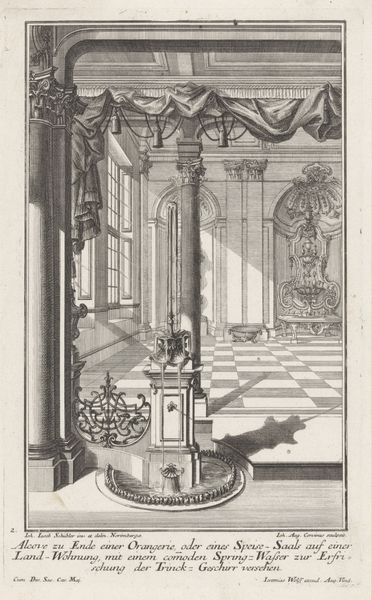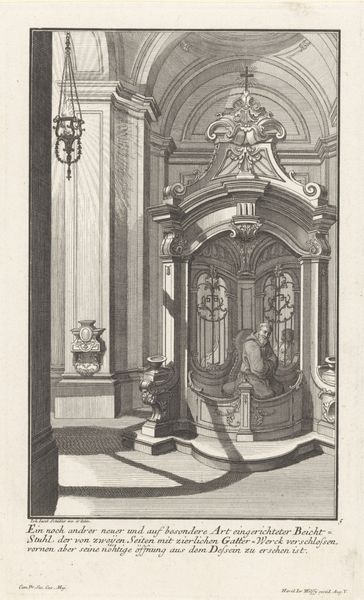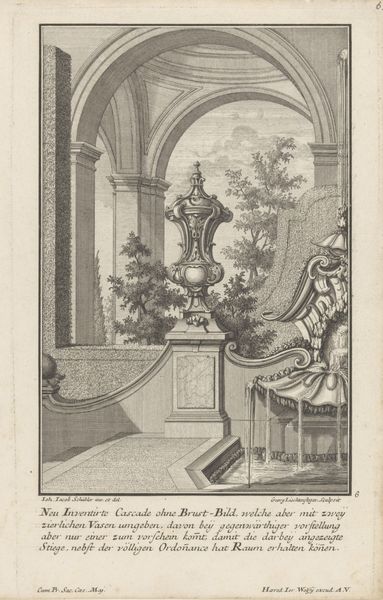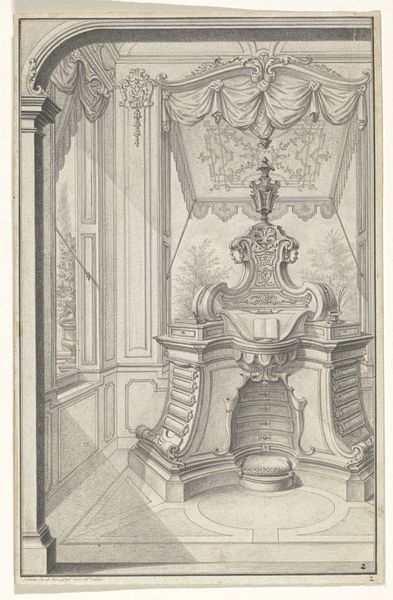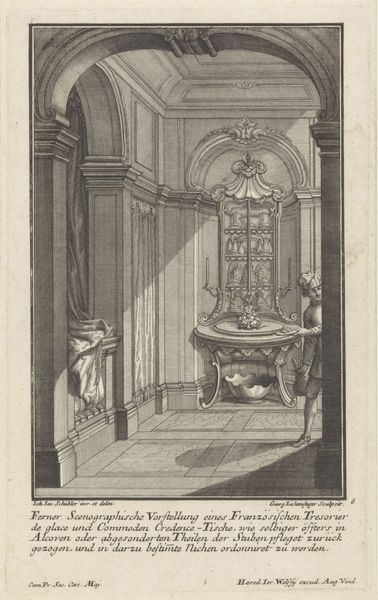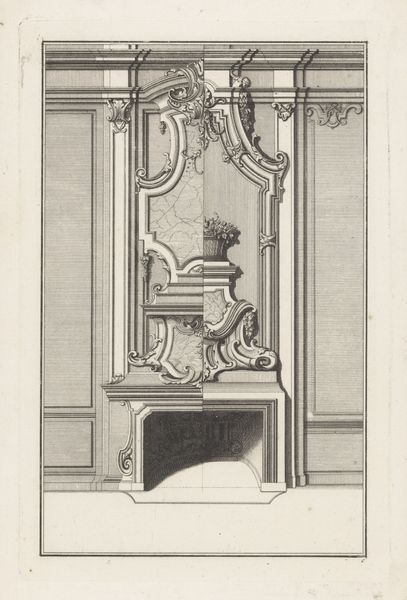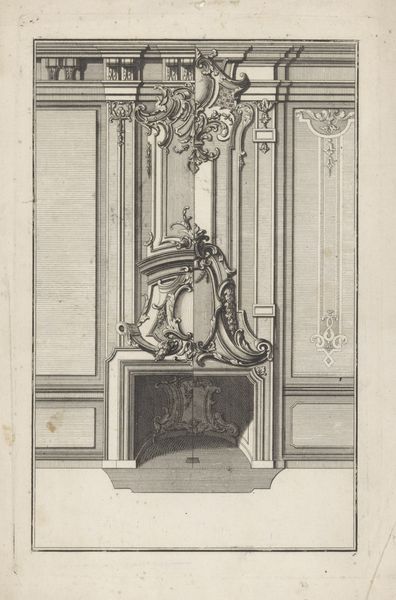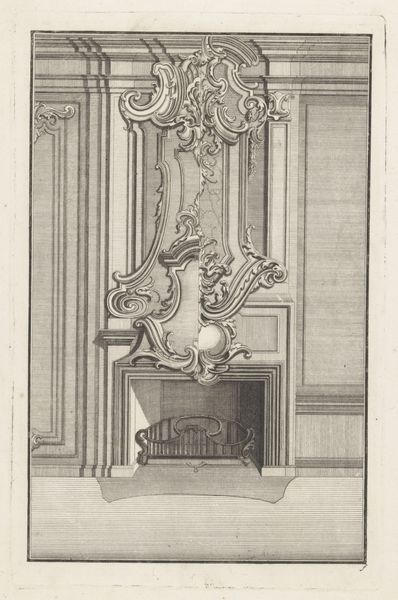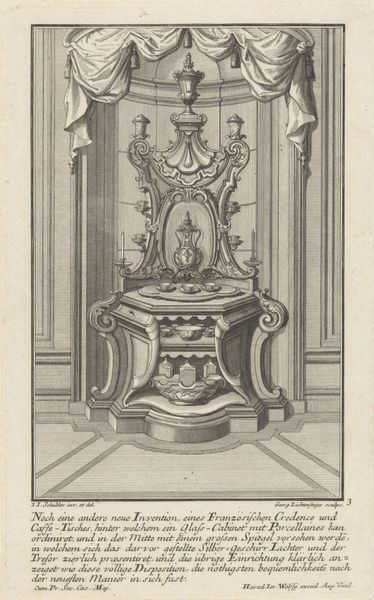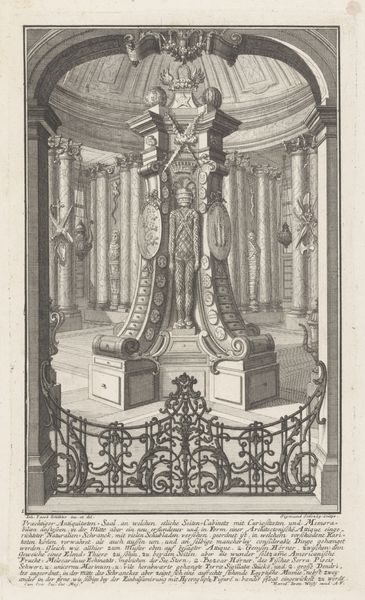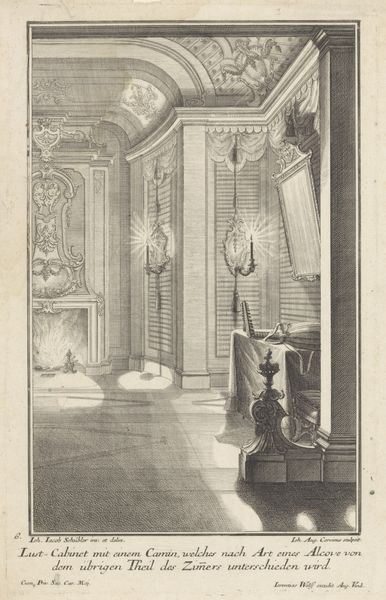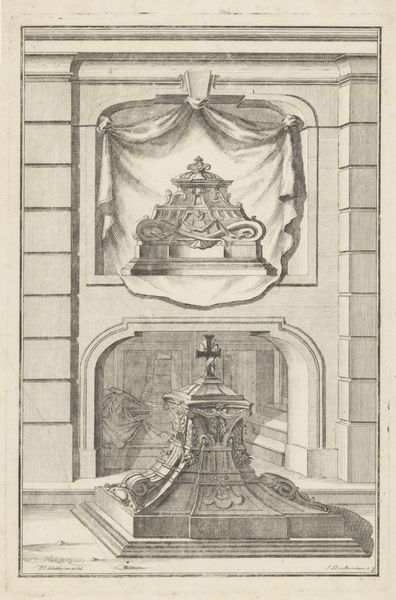
drawing, print, engraving, architecture
#
drawing
#
baroque
#
mechanical pen drawing
# print
#
old engraving style
#
perspective
#
pen-ink sketch
#
genre-painting
#
engraving
#
architecture
Dimensions: height 293 mm, width 185 mm
Copyright: Rijks Museum: Open Domain
Editor: This is Johann Matthias Steudlin's "Interieur van een tuinhuis" or "Interior of a Garden House," made after 1724. It's an engraving, so it gives the scene this incredibly detailed and almost architectural quality. I'm struck by how deliberate and constructed the whole scene feels. What do you see in it? Curator: It’s interesting to consider this engraving within the context of its production. How do we understand the labour involved in creating such detailed prints? The lines aren't just aesthetic; they are the *product* of a specific technical process, repeated and refined over time. What material properties allowed this level of precision? Editor: So, you're focusing on the actual *making* of it rather than just what it depicts. Like the tools, the paper... Curator: Precisely. The choice of engraving itself is a material statement. It's not painting, not a quick sketch; it is a painstaking, reproducible image that speaks to notions of accessibility and perhaps even commodity. The materiality signals a relationship to a growing consumer culture. Consider also that many of the raw materials, like the metal for the plates and ink, had their own networks of extraction and trade... where were they sourced, by whom? How did these socio-economic conditions shape Steudlin's choices? Editor: I hadn’t considered that... viewing it as almost an industrial object and product itself. Curator: And consider the role of the printing press! It is about means and process… these things affected its distribution. So, now do you think this print is "deliberate and constructed?" Editor: Definitely, knowing how many other hands likely touched this. It makes the whole viewing experience feel… more real, somehow, less about a singular vision.
Comments
No comments
Be the first to comment and join the conversation on the ultimate creative platform.
